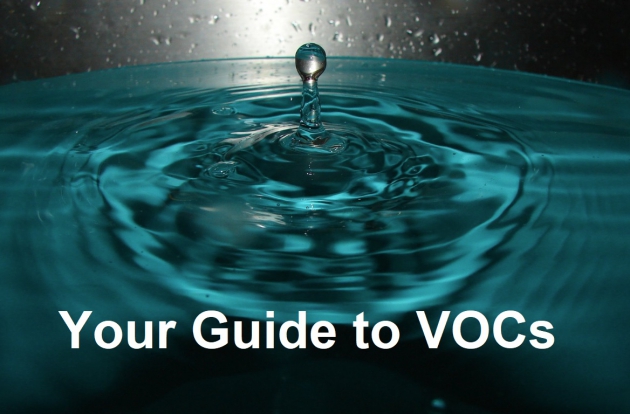If you’re interested in your water quality, you may have heard the term VOCs and be wondering about whether this will impact your drinking water. So, here we’ll delve into the topic of VOCs.
The VOCs Basics:
VOCs or volatile organic compounds are organic chemicals that have a very low boiling point. They can originate from a variety of household products from paint thinners to bug sprays. Since they have a low boiling point, when VOCs are espoused to typical air temperatures, they turn into gases. It is this ability to convert to gas at temperatures well below freezing is why they are called volatile.
There are many products around the home and office which can release VOCs. For example, when you remove the cap from a permanent market, you may notice a distinct odor. This is a VOC being released. VOCs can come from solvents, glues, markets, inks, cleaning products, pesticides, caulking agents, and even air fresheners.
How Do VOCs Get Into Water Supplies?
VOCs typically enter water supplies as a direct result of human activities. Improper disposal of VOCs can allow them to leach into the ground and eventually, they end up in the groundwater.
But, some VOCs are created as a result of chemical reactions that occur during disinfection processes. It is important to note that waterborne VOCs are a little different compared to airborne VOCs. Typically, they don’t have a distinct odor or taste, which means it can be difficult to know if your water is affected without proper testing.
High levels of VOCs are more likely to be found in groundwater well supplies compared to city water, due to runoff, but you can still find VOCs in city water. The EPA has 23 VOCs on its list of regulated contaminants. This means that municipal supplies need to be monitored for these VOCs to ensure that they don’t exceed the maximum contaminant level. Private well owners are responsible for monitoring the contaminant levels in their own water supplies.
Testing for VOCs in Water Supplies:
There are negative side effects associated with many VOCs, with symptoms ranging from irritation of the eyes, nose or throat to damage to organs with prolonged exposure. Fortunately, it is possible to conduct laboratory testing for many of the common VOCs in your area.
If your water is found to contain VOCs, there are a number of treatment options. The simplest is carbon filtration which has been shown to be effective at removing VOCs, since VOCs are organic compounds.
Carbon filters are available in a variety of sizes and applications from point of use units which can be installed under a kitchen sink to whole house systems.
If you have concerns about your water quality, be sure to speak to your local water treatment specialist. An experienced technician can not only perform tests on your water to check for contaminant levels, but can guide you through the variety of appropriate treatment options to help you decide which is the best option for your home.

